Rachael Martin arrives in Aosta’s ‘cold valley’ just in time for carnival, as well as taking advantage of the snowy weather to explore the region
Photos by Rachael Martin unless otherwise stated
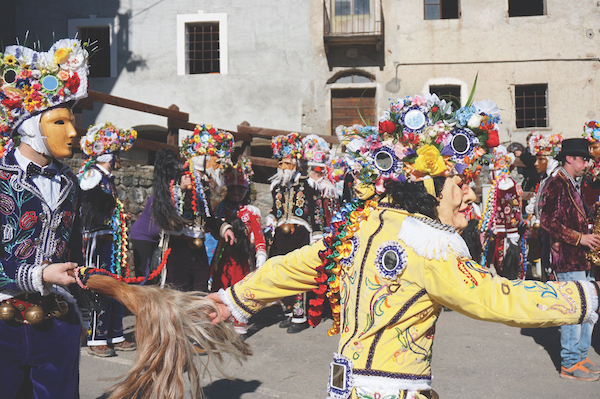
It’s carnival time on a cold February morning in the Great St Bernard Valley in northern Italy’s Aosta Valley region. I’m in a tiny hamlet just above Étroubles, though I could have chosen to be in a number of places as the carnival is celebrated in all the villages and towns in the valley, from Saint-Rhémy-en-Bosses down to Aosta.
The carnival is known in the local Franco-Provençal dialect that’s still spoken around here as the carnival of the Coumba Freida, the ‘cold valley’, in reference to the icy winds that blow down to Aosta from the Great St Bernard Pass that crosses the mountains above us at 2,473 metres above sea level.
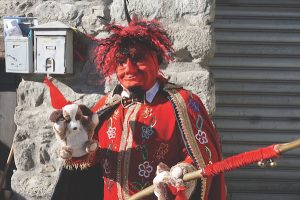
Costumes tell a story
This was where Napoleon crossed with his soldiers to take Italy back from the Austrians in May 1800, a moment immortalised in Jacques-Louis David’s painting of 1801, and the costumes and hats that the people are wearing are reminiscent of these soldiers. They’re also wearing wooden masks, or landzette, to represent the various figures involved in the carnival.
There’s the bear and his tamer, the devil, Napoleon himself, and the village inhabitants brandishing horsetails made out of horse hair to ward off evil spirits. The costumes are lavishly decorated, hand-made with thousands of pearls and sequins and bright colours and flowers that look forward to the beginning of spring, and mirrors to reflect the light and keep evil away.
Legend says that the costumes date back to the wedding of a couple, represented at the carnival by the Toque and the Tocca, who were advanced in age. The fact that the couple were older was felt to be embarrassing by everyone, so instead of wearing their Sunday best, the people of the village wore costumes and masks.
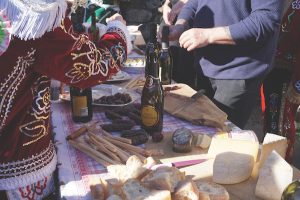
Festive atmosphere
Over the next few days the people involved will visit each village in the Great St Bernard Valley, including those up on the mountainside, stopping to eat, drink, dance and play music as they go. It’s only 10 o’clock in the morning and a festive atmosphere is already under way.
A long table is dressed with local produce – ham, salami, cheese and bean stews. The bear, symbol of fertility, who has just come out of hibernation, is going round giving ‘bear hugs’ to whoever he can grab. Others are chasing each other with their horsetails, though the devil is still doing the rounds with his devil’s fork.
They say that things can get rowdy, that in the past it was a time when vendettas were settled behind the relative anonymity offered by a mask. Yet there’s something almost magical about the scene I am witnessing, framed by the mountains that surround us. For most of us, the mountains involve Sunday trekking and the odd long weekend or skiing holiday. For others it’s a way of life complete with the customs and traditions that define that way of life and preserve its identity. And when the festivities have ended and everyone has gone home, this is a place where the stars shine so brightly at night in the darkest of skies that you’ll just want to sit and gaze and take it all in.
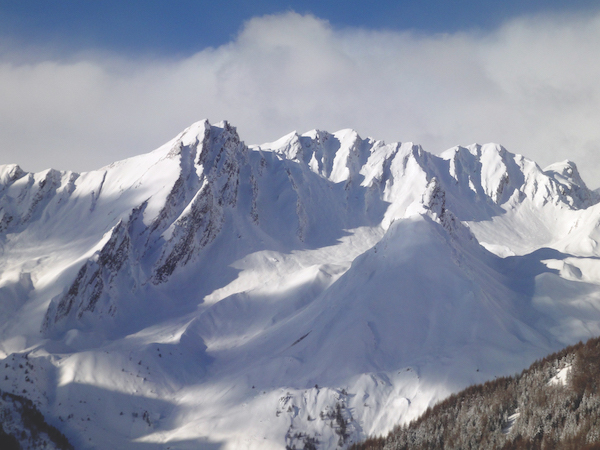
Into the mountains
The Aosta Valley is renowned for mountaineering and ski mountaineering, and its Alpine guides come from a long and prestigious tradition. Corrado Jordan is the mayor of Saint-Rhèmy-en-Bosses and is very involved with the tourist opportunities and activities that the area offers.
“The mountains of the Great St Bernard Valley are very beautiful and accessible to all,” he tells me. “They offer skiing in uncontaminated nature where the whiteness of the snow makes everything so magical as you pass through woods, climb up a slope and get closer to the pass. Then you reach the summit of a mountain, almost touch the sky, and you feel lighter, free, and so small in front of so much immensity.
“Going to the mountains, especially high mountains, is amazing but you need to learn to know them and respect them. Mountains can be severe and sometimes ruthless. Weather conditions can change very quickly and you need to be ready for this. You really should go with a mountain professional such as a ski teacher or a guide, and if you’re thinking of going off on the glaciers or some of the more demanding trails, then this is essential.”
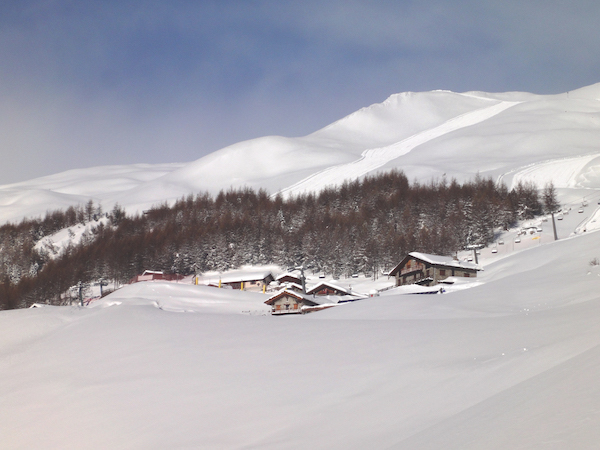
Skiing, snowshoes and snow parks
For downhill skiing, go to Crévacol, the ski area above the village of Saint-Rhémy-en-Bosses which has 22km of pistes for all the family, from beginners to advanced. It generally opens around the 8th of December, the date of the Immaculate Conception public holiday. For cross-country skiing, there’s an 18km-long piste that links Saint-Rhèmy-en-Bosses and Étroubles and takes you through the valley via Saint-Oyen and other villages. Alternatively, put on a pair of snowshoes and head off with a guide through the forests or to take in the beautiful views. Flavio Dalle is a member of the Scuola Italiana racchetta da neve, the Italian snowshoes school, and can be found at their website (in Italian). Children will love the Snow Fun Park Flassin in Saint-Oyen. It’s one of the biggest in Valle d’Aosta and opens from 10am-4.30pm.
- In 2020 the Coumba Freida Historic Carnival takes place on 8-9 February
Where to eat & stay
Bar Ristorante Arp du Jeu
Your best option for local cuisine right next to the ski slopes. In the summertime it’s more of a sit-down place where they serve a lot of hearty game dishes; in the wintertime the Arp du Jeu transforms into a family- and skier-friendly self-service restaurant offering a much broader range of regional and national dishes (national being French or Italian). Above all, though, this is the place to come to try the famous zuppa valpellinese.
Località Arp du Jeu, 3
11010 Saint-Rhémy-en-Bosses
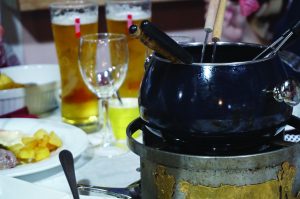
Prosciutteria sous le pont de Bosses
The Ham Shop under the Bridge at Bosses, as the name translates, has all the hallmarks of a typical Alpine café-restaurant – think wood panelling keeping the whole interior snug and warm and all manner of decorations. You can’t miss it, because it really is right there, under the bridge. Do try the Jambon de Bosses, which you can also buy in the deli next door, as well as the house specialities of bourguignonne and cheese fonduta.
Predumaz Falcoz
11010 Saint-Rhémy-en-Bosses
Nuit à Pleiney
I stayed at Nuit à Pleiney in Saint-Rhémy-en-Bosses, which is run by my guide Sara Clerici and her husband Marco Bianchi. The bed and breakfast is in the valley at the far end of the village and has several double rooms and a ground-floor flat. Sara and Marco can also advise on you on your ski mountaineering options and put you in touch with guides.
4, Località Pleiney,
11010 Saint-Rhémy-en-Bosse
More information
Visit Gulliver.it to find relevant information, maps, photos, routes and videos – information is available in five languages for winter 2019-20.
For a list of mountain guides, consult the website for the Società delle Guide della Valpelline et du Gran Saint Bernard
Contact the Scuola di Sci Grand St Bernardo for guides and ski teachers – the site is in Italian but you can also email them at scuolascigsbernardo@libero.it
To see the carnival costumes at any time of year, visit the Meison di Carnaval de la Coumba Freida, Frazione Ayez, 8 11010 Allein
For more articles about the Aosta region, see our archive
